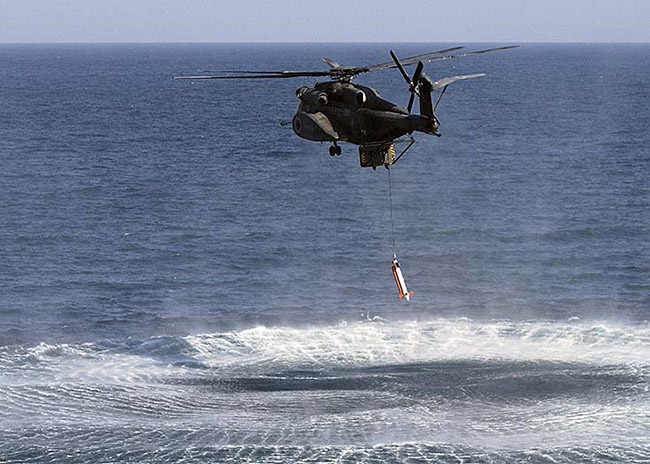

Northrop Grumman Corporation has delivered the first of four AQS-24A airborne mine-hunting vehicles to the Japanese Maritime Self-Defense Force (JMSDF) for deployment on Japan’s new MCH-101 helicopter platform.
The AQS-24A and its predecessors, the AQS-24 and the AQS-14 are the only operational airborne mine-hunting search systems used by the U.S. Navy for the past 29 years. The AQS-24A is a high-speed mine-hunting system that is primarily towed from the MH-53E helicopter and has been adapted easily to the JMSDF version of the EH-101 aircraft.
The AQS-24A contains a laser line scanner that provides precision optical identification of underwater mines and other objects of interest. The AQS-24A allows for simultaneous operation of the sonar and laser, which significantly improves area coverage rate, shortens the mine clearance timeline and alleviates unnecessary maintenance cycles. Advanced navigation controls and processing provide highly accurate target positioning.
Later this summer, Northrop Grumman will deliver the first of four Airborne Laser Mine Detection Systems (ALMDS) to the JMSDF to operate in conjunction with the AQS-24A. ALMDS is a laser-based, light detection and ranging sensor system that detects, classifies and localizes near-surface mine-like objects from above the waterline and is complementary to the AQS-24A.



















